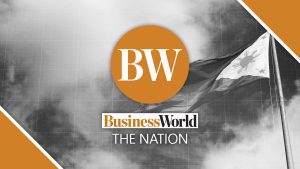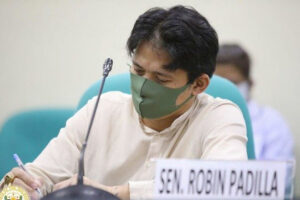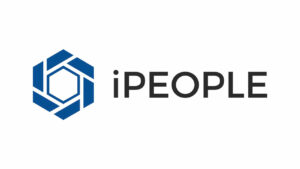Maharlika Wealth Fund: Cheers and fears

CRITICS from various sectors — including private citizens, economists, academics, bankers, and government officials — have decried the Maharlika Wealth Fund (MWF), citing lack of fiscal space, high debt levels, and possible mishandling of funds as reasons the Philippines is not ready for a sovereign wealth fund (SWF).
Business associations and economic policy groups, in a Dec. 5 statement, said that they do not support the creation of a SWF. “We register our serious concerns and reservations against the proposed MWF on the principles of fiscal prudence, addtionality, solvency of social pension funds, contingent liabilities, monetary independence of the Bangko Sentral ng Pilipinas, government in the economy, and transparency,” said a statement approved by 12 associations, including the Foundation For Economic Freedom and the Management Association of the Philippines.
House Speaker Ferdinand Martin G. Romualdez on Nov. 28 filed a bill that seeks to create a SWF which will be used to make investments seeded by government banks and major pension funds.
“[The fund] seeks to bring and foster a better environment for development, for long term projects that will further develop our country’s growth,” he said in his keynote speech at the Nov. 29 BusinessWorld Economic Forum.
It will follow the mold of the oldest SWF in the world, the Norwegian Investment Fund, and Singapore’s own SWFs, GIC Private Limited and Temasek Holdings, he added.
There is a catch, however, including the fact that SWFs in Norway and Singapore were financed by their respective country’s profits from natural resource extraction (Norway) or surplus of wealth (Singapore), according to economist Filomeno S. Sta. Ana III.
In his BusinessWorld column, he said that the Philippines has no huge surplus to preserve. The MWF will have to take capital from government financial institutions (GFIs): the Government Service Insurance System (GSIS), Social Security System (SSS), Land Bank of the Philippines, and Development Bank of the Philippines (DBP). The fund will require a total of P275 billion, or $4.91 billion, in seed money.
CHANNELING INVESTMENTSHouse Bill 6398, which Mr. Romualdez filed with deputy majority leader Ferdinand Alexander “Sandro” A. Marcos (Mr. Romualdez’s cousin and President Ferdinand R. Marcos, Jr.’s son) names the president as chairman of the board that will oversee the fund.
Its goal will be to “optimize investment allocation” by the previously mentioned GFIs, as worded in the bill. It will also ensure that resources are efficiently channeled to “investments that will provide the most value” to participating GFIs and the country.
Central bank governor Felipe M. Medalla expressed caution with regards to the fund, saying in an interview with Bloomberg TV that transparency will be very important.
His key concerns are how the fund will be managed and by whom, and to what extent it will affect the independence of the Bangko Sentral ng Pilipinas (BSP).
“If they say we will take the central bank’s dollars…we will have less ammunition the next time there is international volatility,” he said.
Mr. Sta. Ana echoed this concern, calling the new corporation that will be formed around the fund as redundant. His column reads: “This is not wealth creation; this is transferring resources from one pocket to another. This means costly trade-offs, huge opportunity costs, and gross inefficiencies.”
SAFEGUARDS IN PLACETo ensure transparency and accountability, the bill’s proponents have said that the fund shall adhere to the 2008 Santiago Principles, a set of 24 best practices established by the International Forum of Sovereign Wealth Funds.
Albay Second District Rep. Joey S. Salceda, who heads the House Ways and Means committee, defended that the MWF will have several levels of accountability: the 15-member board of directors which will be headed by the president as well as heads of the four participating GFIs.
The board will also have private sector independent directors from the Philippine Stock Exchange, the Bankers’ Association of the Philippines, University of the Philippines School of Economics, and the national treasurer.
There will be an advisory board composed of economic managers, a risk management unit, and a joint congressional oversight committee composed of five members each from the House of Representatives and the Senate, he said in a statement.
“It will be subject to rigorous accountability requirements via strict disclosure requirements which will entail its books being audited across three levels — internal, external, and Commission on Audit,” he added.
VULNERABLE TO CORRUPTIONJohn Paolo R. Rivera, economist at the Asian Institute of Management, explained that it is problematic and risky to get sovereign funds from GFIs like GSIS AND SSS, given existing constraints in funding members’ benefits due to limited budgets.
He suggested in an interview on BusinessWorld Live that the private sector is an option for an efficient way to generate funds.
“Most economies invest their surplus funds into their sovereign fund because they want to expand their liquidity further and faster, so the role of the private sector is very important because they are the ones who have surplus funds,” he said.
Even considering the safeguards, Mr. Sta. Ana of policy research group Action for Economic Reforms pointed out that the President heading the board and the MWF and its corporation being exempt from taxes, from regulatory restrictions on the GFIs, and from provisions of the government’s procurement law are cause for concern.
These make the MWF “most vulnerable to abetting recklessness, politicization, corruption, rent-seeking, and cronyism,” he said.
The bill’s backers are seeking to complete the third and final reading before Christmas break on Dec. 17. — Brontë H. Lacsamana




